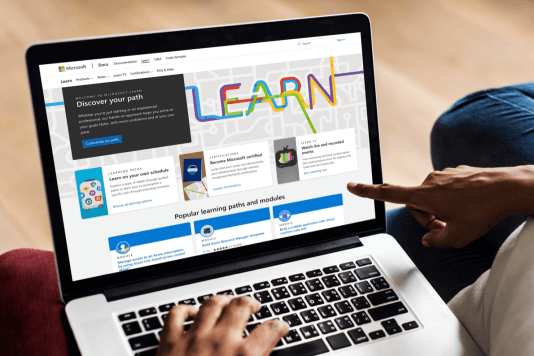Microsoft Learn + UserTesting

About Microsoft Learn
Microsoft's mission is to empower every person and organization on the planet to achieve more. It develops, manufactures, licenses, supports, and sells software, hardware, and services. Microsoft employs more than 156,000 employees in more than 100 countries.
The Microsoft Learn division provides education and certification on Microsoft products to end users worldwide.
Microsoft selected UserTesting as its preferred vendor for qualitative user experience insights worldwide.
Microsoft Learn achieved


Challenge
Microsoft’s Global Skilling Initiative brings digital skills to more than 25 million people worldwide. Microsoft offers free access to learning paths and comprehensive resources to help people develop the skills needed for in-demand jobs.
But Microsoft needed to know how to better structure its online content to surface what learners and employers needed. Microsoft’s Content and Learning team had a goal to develop a unified experience strategy and build better outcomes for customers and users.
As Rachel Price, Senior Information Architect at Microsoft, put it, “If we understand people's mental models for how they connect things together—whether by skill, by task, by job title—we can address those models in the user experiences we build. UserTesting allows us to uncover these human insights faster and more efficiently, which empowers us to dynamically put content together in ways that are meaningful for the people we're trying to help."
“We help millions and millions and millions of people all over the world,” Price said. “If we wanted to try to segment them by demographics, we would never finish. There would just be so many little chunks. We needed a better way to build behavioral archetypes so we could explore more meaningful problems that we could solve well.”
Solution
With stakeholder support across the org, Horyun Song, UX Researcher at Microsoft, conducted qualitative research to develop a baseline understanding of customers from a behavioral perspective.
For this particular research, Song focused on re-engagement. Why and how do users re-engage with Docs and Learn? Which behavioral archetypes and journeys are supported and which are left out?
The team synthesized the findings into five behavior-based archetypes to help identify friction in customer journeys in order to simplify the experience. Song said, "Our business goal is to have a shared understanding across the entire business of who our customers are and what we can do for them. That includes an understanding of their behaviors and more importantly their attitudes that explain why, which UserTesting is perfectly designed to uncover. UserTesting has an extremely diverse network of insight contributors around the world who provide nuanced perspectives and insights, driven by their wide ranging roles, regions, demographics, psychographics, cultural and community influences.
Outcome
The Microsoft team shared the results on the behavioral archetypes from the research in cross-team workshops across Microsoft. Feedback from these workshops was overwhelmingly positive. "Our high-level goal is to help them build empathy for their customers and transfer deep knowledge of customer needs and behaviors, whether user researchers or implementers, like PMs, engineers, designers, content developers, etc.", said Sara Lerner, Customer Research Senior Program Manager. As a result, individual teams and implementers across Microsoft are now able to leverage their research in strategic planning efforts as well as day-to-day decision-making.
Lerner said that by having this shared understanding of Microsoft customers' needs, they're more efficient in making decisions. “We waste far less time hunting for evidence to inform how to move forward. Now with UserTesting, we can get to that conversation so much faster. It's like, ‘Here are the customer challenges and experience gaps we need to solve. Now that we know why let's figure out how to create something even better.'”
Because Microsoft is such a large organization, there are initiatives happening all over the globe, by many different teams moving in different directions. Having a shared foundation of customer needs to solve can help prevent work from happening in silos.
“When we make a change, it affects tens of millions of pages at a time on the content side, which impacts millions of users in a given day,” Price said. “What we've learned by working at this scale is that if we can't zoom out and come to a shared understanding of our customers, it's really hard to move forward and make changes happen quickly.” UserTesting allows a company as large and complex as Microsoft to go to market with the kind of agility and alignment of a much smaller company.
.jpg) Horyun SongUX Researcher, Microsoft
Horyun SongUX Researcher, MicrosoftEven with a tight schedule, we strive to get things right for customers. Now, we can run tests and get results the same day. I didn't imagine this was possible before we had UserTesting.
 Sara LernerCustomer Research Senior Program Manager, Microsoft
Sara LernerCustomer Research Senior Program Manager, MicrosoftNow we can reach global audiences with a diverse cross section of people for our studies. That's important to our team.
 Rachel PriceSenior Information Architect, Microsoft
Rachel PriceSenior Information Architect, MicrosoftEmpathy is the answer. It's the source of human insight, innovation, and meaningful change.




